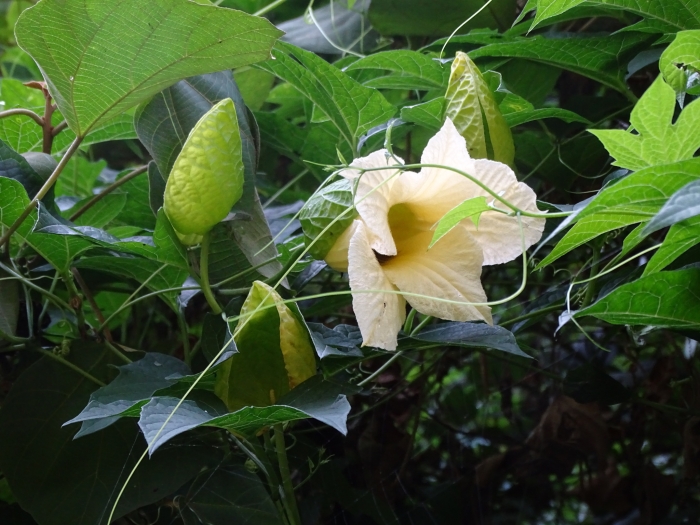Gac
(Momordica cochinchinensis)
Gac (Momordica cochinchinensis)
/
/

百香果
CC BY 4.0
Image By:
百香果
Recorded By:
Copyright:
CC BY 4.0
Copyright Notice:
Photo by: 百香果 | License Type: CC BY 4.0 | License URL: http://creativecommons.org/licenses/by/4.0/ | Rights Holder: 百香果 | Publisher: iNaturalist | Date Created: 2021-09-26T09:43:56-07:00 |

























Estimated Native Range
Summary
Momordica cochinchinensis, commonly known as Gac, is a perennial tendril-bearing vine native to tropical and subtropical regions of Southeast Asia and Northern Australia, particularly thriving in monsoon forests and rainforest margins. It can reach lengths of up to 49 feet (15 meters) with a stem diameter of up to 2 inches (5 centimeters). The plant features large, palmate leaves with 3 to 5 lobes and produces dioecious flowers, meaning individual plants bear either male or female flowers. Male flowers appear in racemes, while female flowers are solitary. The fruit is ovoid, covered with small spines, and matures from green to a deep orange/red color. Notably, the fruits contain seeds encased in a bright red aril that is exceptionally high in beta-carotene and lycopene.
Gac is valued for its ornamental qualities, including its showy fruits and lush foliage. It is often grown in gardens and greenhouses in subtropical climates. The plant requires a well-draining soil, moderate watering, and full sun to partial shade to thrive. It is relatively easy to maintain once established. In cultivation, Gac is primarily grown for its fruit, which is used in traditional dishes and medicines. The aril is notably used in the Vietnamese dish xôi gac, and the immature fruit is cooked as a vegetable in India. While Gac is not widely known for its medicinal properties outside its native range, it is used in traditional Chinese and Vietnamese medicine. Gardeners should be aware that Gac requires a sturdy support structure to accommodate its climbing habit and can be susceptible to pests such as aphids and spider mites.CC BY-SA 4.0
Gac is valued for its ornamental qualities, including its showy fruits and lush foliage. It is often grown in gardens and greenhouses in subtropical climates. The plant requires a well-draining soil, moderate watering, and full sun to partial shade to thrive. It is relatively easy to maintain once established. In cultivation, Gac is primarily grown for its fruit, which is used in traditional dishes and medicines. The aril is notably used in the Vietnamese dish xôi gac, and the immature fruit is cooked as a vegetable in India. While Gac is not widely known for its medicinal properties outside its native range, it is used in traditional Chinese and Vietnamese medicine. Gardeners should be aware that Gac requires a sturdy support structure to accommodate its climbing habit and can be susceptible to pests such as aphids and spider mites.CC BY-SA 4.0
Plant Description
- Plant Type: Vine
- Height: 1.1-20 feet
- Width: 10-15 feet
- Growth Rate: Slow, Moderate
- Flower Color: Cream, White
- Flowering Season: Spring, Winter
- Leaf Retention: Deciduous
Growth Requirements
- Sun: Full Sun
- Water: Medium
- Drainage: Medium, Fast
Common Uses
Edible*Disclaimer: Easyscape's listed plant edibility is for informational use. Always verify the safety and proper identification of any plant before consumption., Showy Flowers
Natural Habitat
Native to tropical and subtropical regions of Southeast Asia and Northern Australia, particularly thriving in monsoon forests and rainforest margins
Other Names
Common Names: Gac, Sweet Gourd, Chinese-Cucumber, Balsam-Pear, Bhat Karela, Giant Spine Gourd, Spiny Bitter Cucumber, Mu Bie Zi
Scientific Names: , Momordica cochinchinensis, Momordica dioica,
GBIF Accepted Name: